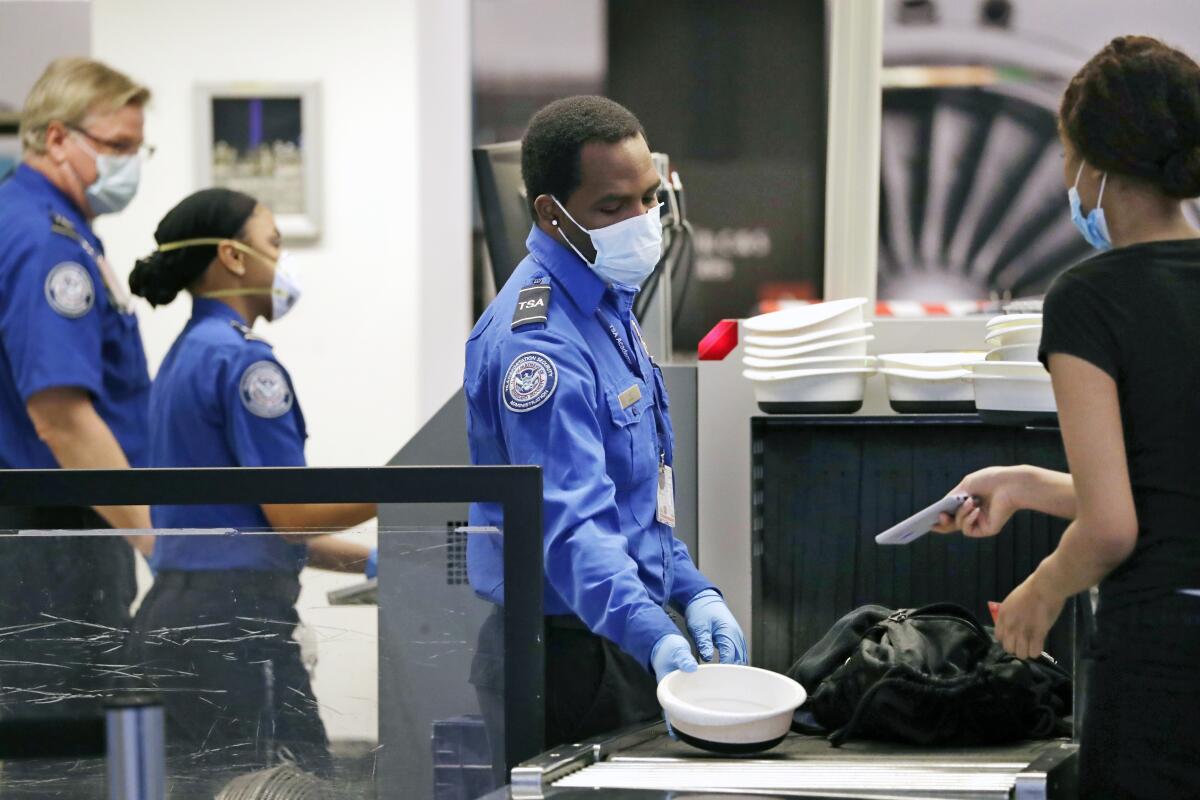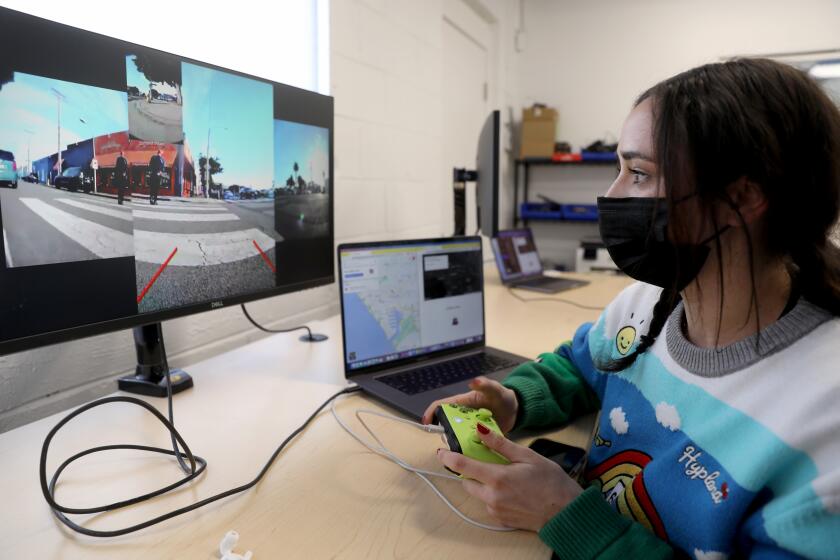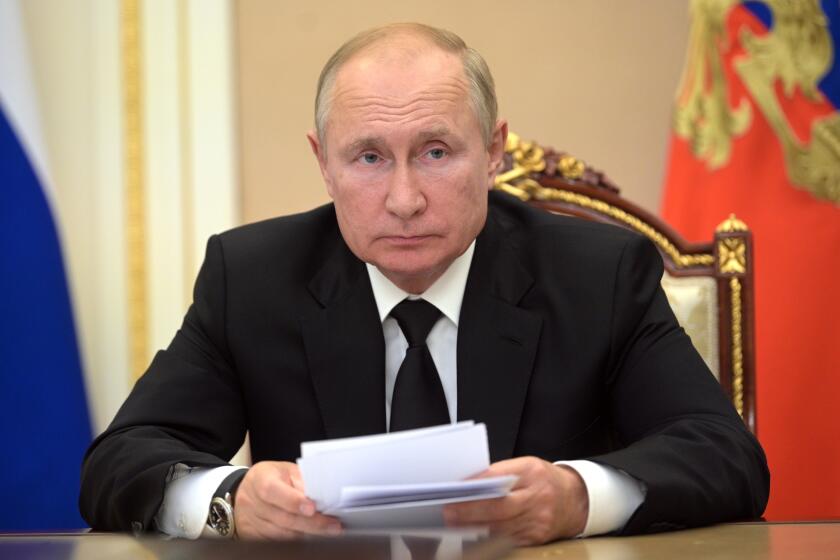The airport of the future? Clearing security without removing laptops or liquids

- Share via
The days of being forced at airport security checkpoints to remove laptops and liquids from carry-on bags may be coming to an end.
The Transportation Security Administration announced Friday that it is spending $781.2 million for hundreds of scanners that use technology employed in hospitals to examine internal organs to more quickly and thoroughly scan carry-on bags for weapons and explosives. That means you can leave your laptops, liquids and other devices in your carry-on bag before it goes through the screener, making the screening process faster.
TSA hopes to install 938 scanners — using computed tomography technology — at most major U.S. airports over the next few years. The first 38 scanners will be installed by this summer, just in time for the busy travel season.
The scanners “provide our dedicated frontline officers with one of the best tools available to screen passenger carry-on items and also improves the passenger experience by allowing passengers to keep more items in their carry-on bags during the screening process,” TSA Administrator David Pekoske said in a statement.
Delivery robots seem to be everywhere these days. Keeping them out of trouble are human minders who might need to hop on a bike to finish the delivery themselves.
Analogic Corp., a Massachusetts-based technology company, was awarded the $781.2-million order.
The X-ray scanners currently used at most airport checkpoints can only generate a two-dimensional image of the contents of each carry-on bag, making it difficult to distinguish the items inside, especially when bags are crammed with electronics and other devices.
The new CT scanners enable TSA officers to see a 3-D image of the items in a carry-on bag. The images produced by the scanners can be rotated on three axes, making it easier for the officers to identify weapons and explosives.
“That’s the beauty of the computed tomography process,” said TSA spokesman R. Carter Langston.
Larger CT scanners have been used for several years to scan checked baggage, but until now have been too big to use in the TSA security lines.
The TSA began testing CT scanners in 2018 at airports across the country, including Los Angeles International Airport, Oakland International, San Diego International, Nevada’s Harry Reid International (formerly McCarran) and Chicago O’Hare. LAX now has six CT scanners in use throughout the airport.
These companies are staying the course in Russia, to their discredit.
More to Read
Inside the business of entertainment
The Wide Shot brings you news, analysis and insights on everything from streaming wars to production — and what it all means for the future.
You may occasionally receive promotional content from the Los Angeles Times.













